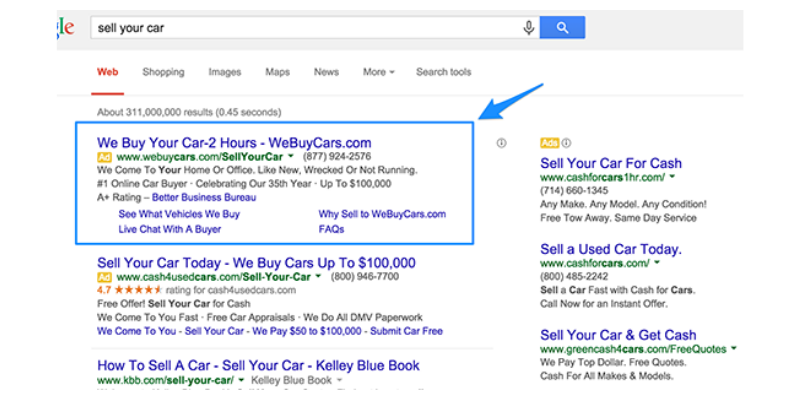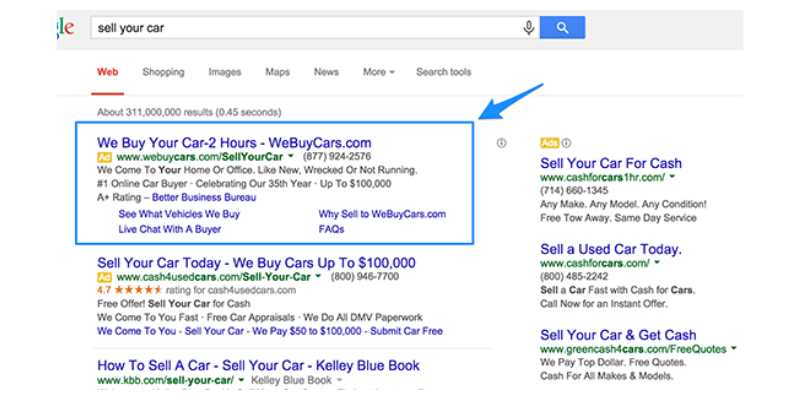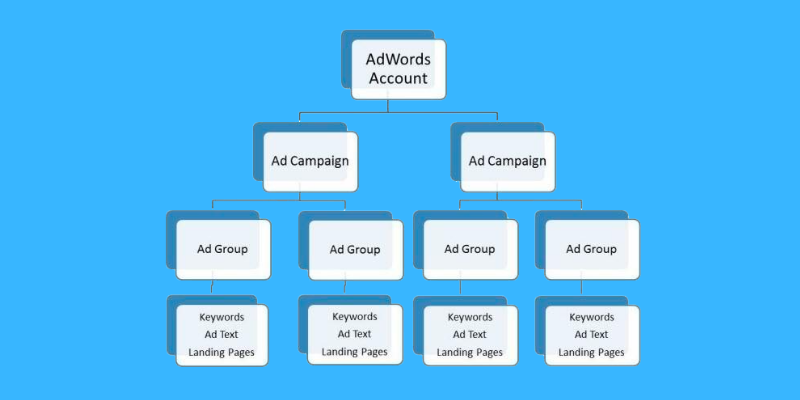This article is about Digital Marketing
An Introductory Guide to Search Engine Marketing
By NIIT Editorial
Published on 31/10/2020
7 minutes
Search Engine Marketing is one of the most efficient ways to promote your products. In this mini search engine marketing guide, you’ll get a birds-eye view of questions like, what is search engine marketing?, and "how to create an effective SEM strategy?”
Let’s jump right to it.
What is Search Engine Marketing?
An SEM campaign refers to advertising your products primarily on the first page of Google, also called the Google Search Engine Results Page (SERP). Since this is entirely paid for, you would hear the term Pay-Per-Click (PPC) being associated with it. The concept is simple. Advertisers target the keywords most closely related to their business/services and run ads that compete to appear on the first page of Google/Bing when the user enters the targeted search query. Broadly two kinds of ads relate to SEM marketing.
The first is a textual ad used to convey information through text.

The other category belongs to visual ads. They pack together text and images to show exactly the product being advertised, as a result of which they are also called product listing ads (PLAs). Viewers can gauge good-to-know information about products, such as ratings, price, appearance, etc., in one glance.

With the right search engine marketing strategy, you can reach buyers at the opportune instant, when they are conducting a preliminary search to shortlist the product of their choice. It doesn’t require advanced preparation as with other modes of marketing as we’ll see in the next section.

By now you should be clear with the answer to the question of what is SEM in digital marketing. It would be fruitful to know exactly how it differs from its close cousin SEO and to what extent.
What is Search Engine Optimization?
Search engine optimization (SEO) refers to organically targeting keywords with relevant content on the website. Provided the website has relevant content, the search query can trigger a landing page to appear on the SERP without paying for it. The process is time consuming but is equally important to maintain a certain frequency of visitors over longer durations. Multiple form-factors affect the organic ranking viewers see on the SERP. Marketers employ the following strategies to have their results rank on particular queries.
On-page SEO
It refers to optimizing particular pages of the website to get a higher footfall. Comprehensive keyword research and content creation are the two pillars for on-page SEO to succeed.
Technical SEO
There’s a lot that goes on in the background as far as SEO is concerned. Factors like site speed, crawlable webpages, indexing, and mobile-friendliness might be adversely impacting the user experience and upping the bounce-rate. Such issues mostly relate to the backend architecture of the website fall under technical SEO.
Off-page SEO
When multiple websites link-back to your content, it indicates to Google that the content is worth rising the ranks. Standard practices include link building through brand mentions, commenting in forums, guest blogging, influencer outreach, and social bookmarking to name some.
The Difference between SEO and SEM Marketing
On the other hand, Google search engine marketing is a low hanging fruit that can circumvent a shortage of time and drive traffic to the desired landing pages. SEO is a long-term game that takes patience and practice to master keeping in mind the updates that Google releases now and then. In addition to it, the following differences are quite visible:
SEM results are labeled as “Ad”
You would notice the “Ad” extension before an SEM result, unlike SEO results that appear as a ranked hyperlink.

SEM results have Ad extensions, SEO results have meta-description
You can add extensions to an advertisement so interested viewers can contact the source. These vary as per the CTA from callout extensions, social extensions, to site link extensions. You can even add a rating extension to showcase rewards-won and establish instant trust.

For organic SEO results, Google displays an optimized title and meta-description that sets expectations in 2-3 lines from the link.

SEM results cost money, SEO – only effort
Ads run on a predefined budget. This is monitored through the Google AdWords account. Each keyword you target has a price and this price gets deducted every time a user clicks on the advertisement. SEO results on the other hand incur no direct but only indirect costs which spent acquiring the resources to create content. Human capital.
You Can Set Additional Filters for SEM
With the right mix of search engine marketing strategies, you can handpick the audience to be shown your ad. This could be based on age, ethnicity, location, income, etc. Although you do not get the same flexibility with SEO results. Any searcher, provided they’ve entered the query you’ve optimized your site for, can view the result on the SERP.
SEM is for Instant Impact
Not everyone is good at SEO due to which you can leverage SEM to deliver an immediate rise in website traffic for upcoming flash sales. From the moment you hit the live button, your SEM marketing campaign is live. SEO efforts can take months to show up on Google.

Keyword Research for SEM
This is the most important part of any SEM marketing campaign. You need the right set of keywords to target for advertising. Follow the below steps to have a productive SEO SEM marketing run from start to the finish.
Branded Keywords
You will have competitors no matter whether you run a mom-n-pop store or an enterprise. What’s important is that you can use the sleight of hand to have competitor keywords work for you. For instance, imagine you sell sports shoes, naturally, you operating in the same space as Adidas, Nike, and Puma. Therefore, when people search for “Adidas shoes” you can have one of your ads pop right up and steal some thunder out of your competitors.

Look closely, the same strategy is already being applied by PUMA in the screenshot.
While this was taking a page out of your competition’s book, you should not overlook keywords associated with your brand label.
Feature Specific Keywords
People tend to prefix their search query with literally what they have in mind. Consider search terms like
- “Modular” sofa
- “Scratch proof” sofa
Some keywords define the shape and size of the product. Staying with our example, had the customer searched for “red sofa” and had you missed on including it in your keyword bucket, then you’d also be missing out on business, even if that’s precisely what you were selling.

High Intent Keywords
Such keywords may not out-rightly be product-related but still point to the burning curiosity of the buyer to immediately settle with the best-fit, available product. Examine the following keywords for starters:
- Free gym near me
- Mobile Flash sale
- Gyms under 2000
- Fastest home internet in my area
Instead of a specification, the user intent is on price and the vicinity of the service provider. Populating your keyword checklist with such queries tends to prove beneficial.
Negative Keywords
Negative keywords are search terms that have nothing to do with your item. Shortlisting and making them a part of your keyword list will save you money and avoid irrelevant traffic. Take the example of the keyword “ice cream”. If you run an ice parlour you wouldn’t want to target terms like “ice cream recipes” for your campaign.
Broad Match or Exact Match
This is yet another important factor to consider. If you select the “broad match category” in the Keywords Planner, then you leave the job of matching keyword accuracy with the search query up to the discretion of Google. One upside is that your ads could pop up on remotely-linked terms, increasing the chances of a click-through.
If you select the “exact match” category then your ads would only surface when the exact query is entered. Advertisers do this to have their budgets long-last.
Group Keywords
Keyword grouping is elemental to an outcome-oriented campaign. After handpicking the initial list of terms to work with its time to organize them. Your products would fall under flagships/parent categories and there could be multiple campaigns running parallel for similar products. Classifying each under a sub-head would help you track performance and react accordingly.

Search Engine Marketing Ad Auction
Your advertising budget is a strong determiner of the final ad rank, but not the only one. Thousands of people could be vying for top-spots on the SERP for the same keyword. How does a search engine, say Google, prioritize one over the other? After you’ve concluded creating the campaign, it goes through a cycle of Ad auction which determines whether it would find its place on SERP or not.
- The ad auction is automatically activated every time someone types in a search query. As an advertiser, you would input a cost that would automatically come out of your account, each turn when someone clicks your ad. This is called cost per click (CPC).
- The Ad rank is calculated by Google by considering two factors. The first is the bid, the amount you suggest forking out per click of the keyword. The second is the quality score, a rating that Google attributes to your ad based on its overall relevance.
Optimizing your quality score can make it possible for your ad to attain a higher ad rank even with a lower bid.

Become an SEM Expert
At NIIT, you can get much more than a search engine marketing course, something that empowers you to build a career and not just upskill. The Post Graduate Diploma in Digital Marketing & Branding at NIIT is an end-to-end online career course with the potential to invoke and augment the marketing talent inside you. In over 400 hours of faculty-led online sessions, students are trained in subjects like:
- Search Engine Optimization
- Search Engine Marketing
- Marketing Analytics
- Inbound Marketing
- Mobile Marketing
- Online Reputation Management
- Customer Relationship Management
- E-commerce optimization
- Client Management
Aided by placement assistance, this programme has been a flagship livewire for people aiming to begin their digital marketing careers with the best possible start. Are you game?
Post Graduate Programme in Digital Marketing and Branding
An Online programme for Graduates to get them skilled for rewarding careers in the Digital Marketing Industry.
400+ hours of Online Learning
Mapped to FB & Google Certifications


 Sign In
Sign In































































































































































































































































































































































































